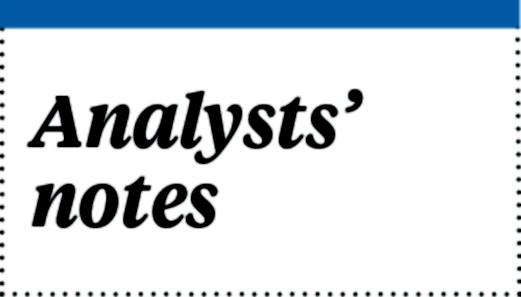HONG Leong Investment Bank (HLIB) says Maybank, Alliance Financial Group and Public Bank will have highest positive impact from a potential interest rate hike to be announced by Bank Negara Malaysia this week.
“In general, banks with higher floating loan percentage will benefit as these assets are re-priced instantly. Meanwhile, banks with higher percentage of current and savings account will also benefit despite immediate re-pricing as rate adjustment is normally half of base lending rate/ fixed deposit rates adjustment,” HLIB said.
However, these measurements do not
provide the timing of re-pricing, which means that they are only good as an
indication, but not suitable to undertake earnings sensitivity.
“The best measurement to undertake such study would be to look at the interest rate sensitivity gap, which is the amount of assets and liabilities that will be re-priced within a certain period of time,” it said in its notes yesterday.
According to HLIB, banks with higher positive gap (more assets then liabilities) in the shorter re-pricing period (up to one month) will benefit more.
This is because of significantly more assets then liabilities that will be re-priced within a month. All banks have positive gap in one month, but negative gaps in one to three months and three to 12 months.
“This suggests that the initial benefit from the positive gap is temporary and will eventually be eroded by the subsequent re-pricing of more liabilities (vis-à-vis assets). The main beneficiaries are Maybank, Alliance Financial Group and Public Bank, although all banks would benefit,” it noted.
HLIB said regardless of the potential impact, which is minor at 0.3- 2.2 per cent, investors should not get overexcited as competitive pressure is likely to erode the potential benefit from a rate hike.
This was evident during the period between May 2010 and May 2011, where overnight policy rate was hiked from two per cent to three per cent, net interest margin did not improve, but rather decline further due to competitive pressure.
“Historically, rate hikes tend to increase volatility in the sector. On average, the Finance index would gain by 1.8 per cent one month after, but would subsequently fall to
-1.3 per cent by the fourth month before resuming uptrend from the fifth month onwards on more entrenched growth.”
HLIB is maintaining its “neutral” call on the sector, given that although rate hike is positive on perception and sentiment, it is unlikely a re-rating catalyst as potential benefit is still suspect.
There is risk of recession and its impact on asset quality, portfolio losses (mark to market and realised), non-interest income growth as well as more macro prudential measures, it added.
“Positives include best proxy to the impact of economic transformation programme (sector with third highest multiplier effect), domestic consumerism (albeit slower) and economy, strong asset quality, robust capital ratios, capital management and mergers & acquisitions.
“Negatives include competitive pressure on margin, potential of higher living costs, which would increase the possibility of rise in delinquencies, portfolio losses from foreign outflow and rising burden of low income group,” it noted.





